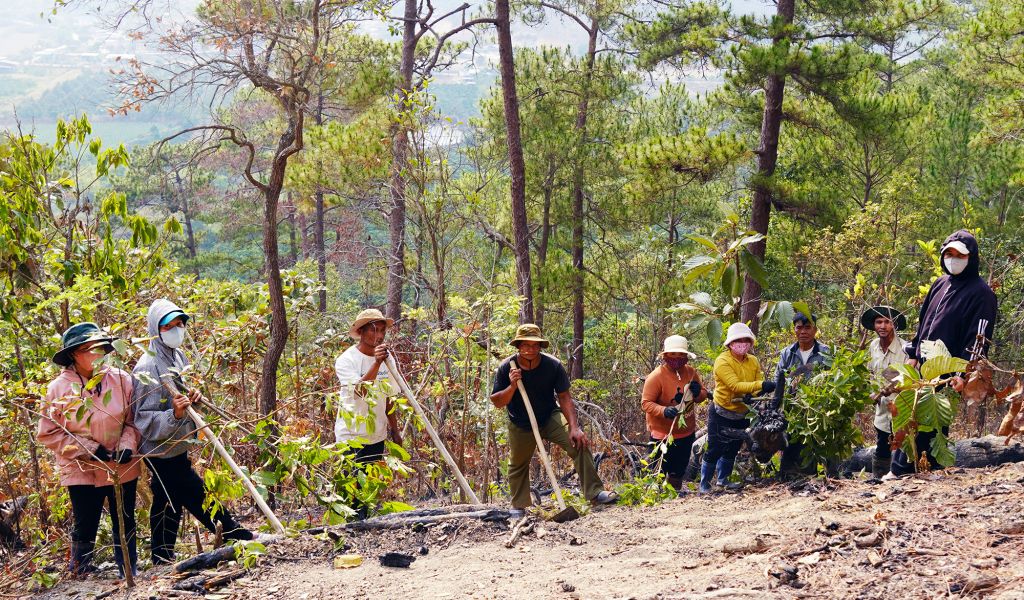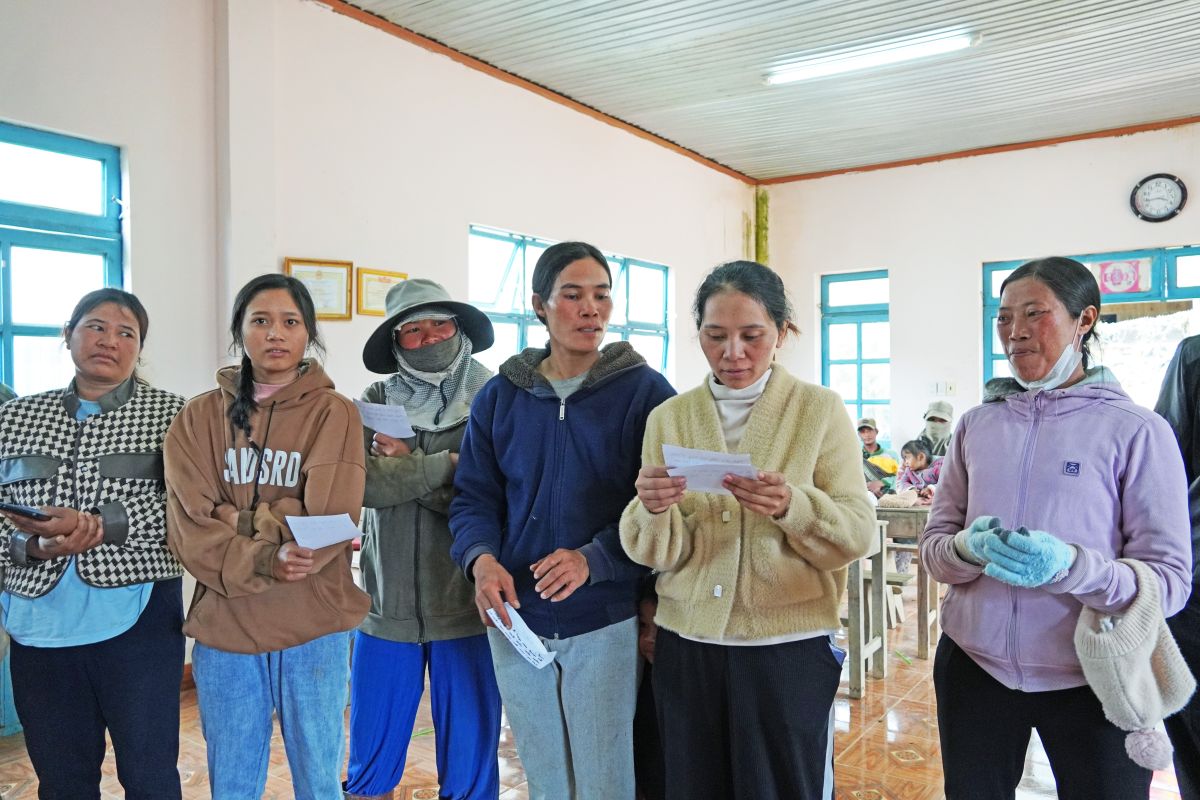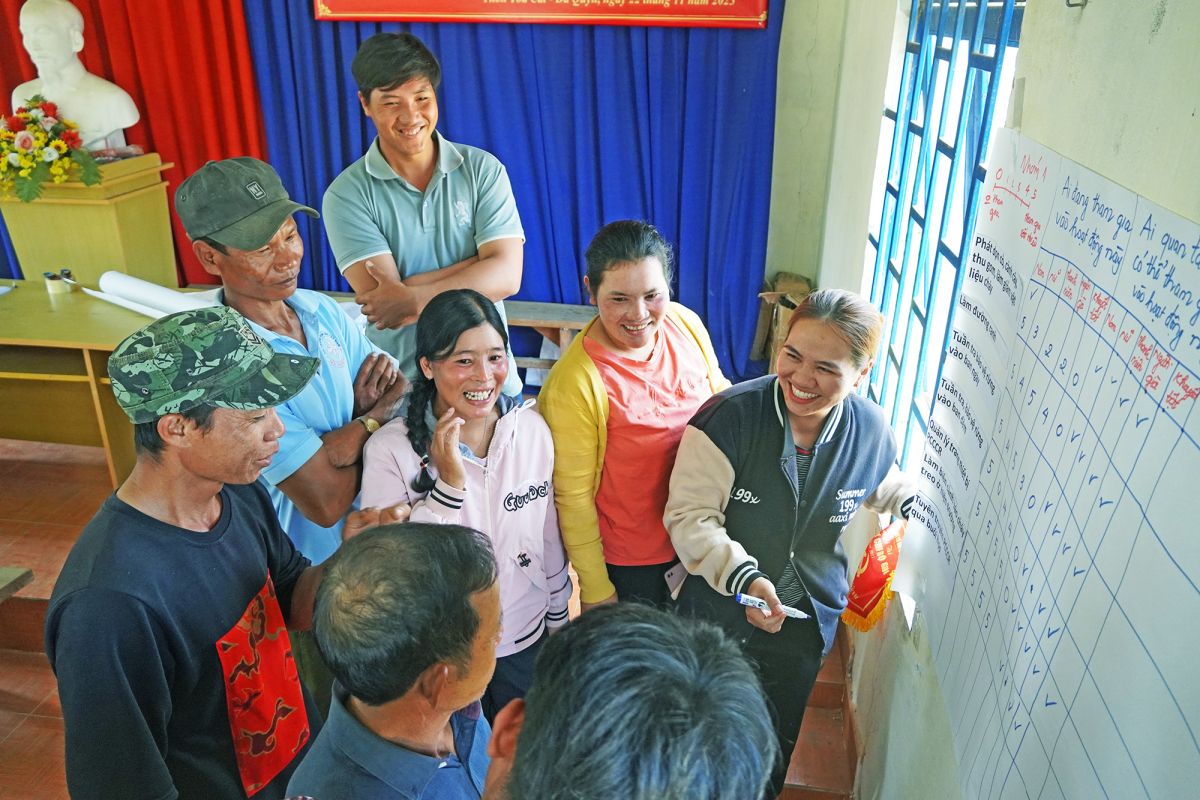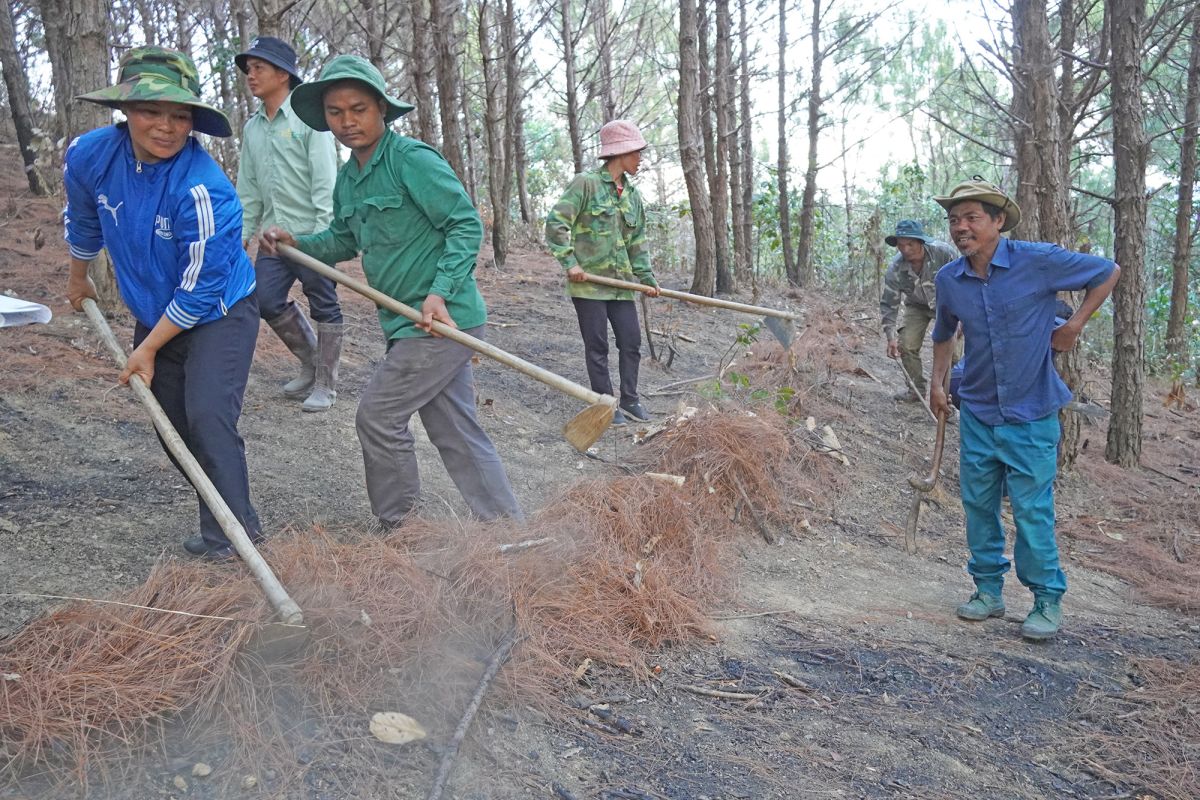Towards inclusivity in community-based fire management

In Da Quyn, a commune in Viet Nam’s Duc Trong district, Lam Dong province, community members patrol the forest daily as part of a contract with a local forest protection management board. While women regularly visit forests to collect food, firewood and other materials, they have not been part of these patrols for the past few years. Ma Do Na (who is 35 years old) and other women from her village (Ma Bo) and surrounding villages say women used to participate in forest patrols up until around 2020. “Since the night patrols began, we are no longer allowed,” she says.
The exclusion of women from forest management, especially forest patrols, highlights a major gender equality and social inclusion (GESI) gap. A GESI analysis conducted by RECOFTC in January 2024 identifies this as a pressing issue across Ma Bo, Cho Rung, Tan Ha and Toa Cat villages in Da Quyn commune.
The GESI analysis was conducted as part of the Community-based Fire Management (CBFiM) project. RECOFTC, with support from the United States Department of Agriculture (USDA) Forest Service and partners, advocates for inclusive forest management and wildfire prevention across landscapes in Cambodia, Lao PDR, Thailand and Viet Nam.

Improving women’s participation in forest fire management
Forestry remains a largely male-dominated sector across Viet Nam. The absence of women in forest management is a concerning issue in many community-based forest management models. In Lam Dong province, women comprise less than 30 percent of the staff in forestry-related organizations. To address this gap, RECOFTC, in collaboration with the Department of Agriculture and Rural Development and the Department of Forest Protection in Lam Dong province, has initiated several interventions.
We are supporting local communities to develop community-based fire management plans. The development process has been participatory, with men and women invited to discuss not only activities in the management plans, but also women’s contributions to these plans. Recognizing that forest fire management covers a lot more than simply patrolling, the CBFiM plans are designed to facilitate women’s participation in activities such as communication, construction of fire break lines, tree plantation and restoration of forests. There are provisions in the plan for women to participate in firefighting and patrolling as well.

During the planning meetings, women were represented, were provided platforms to voice their concerns and recommendations, and had voting rights. All men and women who participated in the meetings have agreed to form a local core group with 33 to 45 percent female membership to promote and monitor the implementation of the CBFiM plans. Two GESI champions – one male, one female – have been elected from each village to promote GESI in the implementation of their CBFiM plan. All core group members have participated in multiple trainings to build fire management skills.

Initial recognition of participation
Through several meetings and training on GESI, men and women in the four communities have become more active in their participation and considerably more confident in their approach. This is particularly true when it comes to voicing their opinions and presenting the results of group discussions and dialogues.
“The training has significantly improved our understanding of inclusion in forest management,” says Y Pam Ayun from Cho Rung village. “We now understand that each of us, regardless of gender, age and physical status, can contribute to forest management, based on our individual abilities.”
Better forest fire management for a better environment and livelihoods
Forty percent of the forests in Duc Trong district lie in Da Quyn commune. In all four communities here, locals report that the climate has become more extreme, causing a decline in available water sources for agriculture. The prolonged dry season, coupled with El Niño, poses high forest fire risks. Coffee farms, which are the main source of income for most local households, are at risk from forest fires. Controlling forest fires is therefore an immediate need for the villages.
Cil K’Hanh from Tan Ha village says, “Forests play important roles in our community. We go to the forest to collect food, materials and firewood. In the rainy season, forests offer us a lot of nutritious food products – mushrooms, bamboo shoots and veggies. Although it is very dry in the dry season, we can still find some veggies for our meals there.”
What’s next?
Through the CBFiM project, more than 150 households in the four villages have participated in meetings and trainings on forest fire management and gender equality and social inclusion. As a result, inclusion in forest fire management has significantly improved.
In the context of CBFiM plans being implemented and community governance structures being put in place to support the implementation of these plans, there remain some gaps that need to be addressed. There is a need for local core groups to develop the skills needed to support the implementation, monitoring and reporting of CBFiM plans.
Local GESI champions should be equipped with more skills and knowledge to ensure GESI integration in the implementation of CBFiM activities. More dialogues and discussions should be fostered between men and women in community forest patrolling groups to reach mutual understanding and agreement on the implementation of planned activities.
There is also the need to organize more dialogues and discussions between local communities and the Ta Nang Forest Protection Management Board and other forestry-related organizations at the commune level. This can muster further support from the government and decision makers for CBFiM, creating more spaces for women to participate in forest fire management.
###
Nguyen Thi Thuy is a program coordinator at RECOFTC Viet Nam.
This story/publication was produced through the Community-based Fire Management (CBFiM) in Asia project.
The CBFiM project is made possible through a five-year cooperative agreement between the USDA Forest Service International Programs and RECOFTC. The project receives financial support from the United States Indo-Pacific Command (USINDOPACOM) of the Department of Defense, along with funding from USAID and the USDA Forest Service International Programs.
For more information, please visit www.recoftc.org/projects/cbfim
RECOFTC’s work is made possible with the support of the Swiss Agency for Development and Cooperation and the Government of Sweden.

